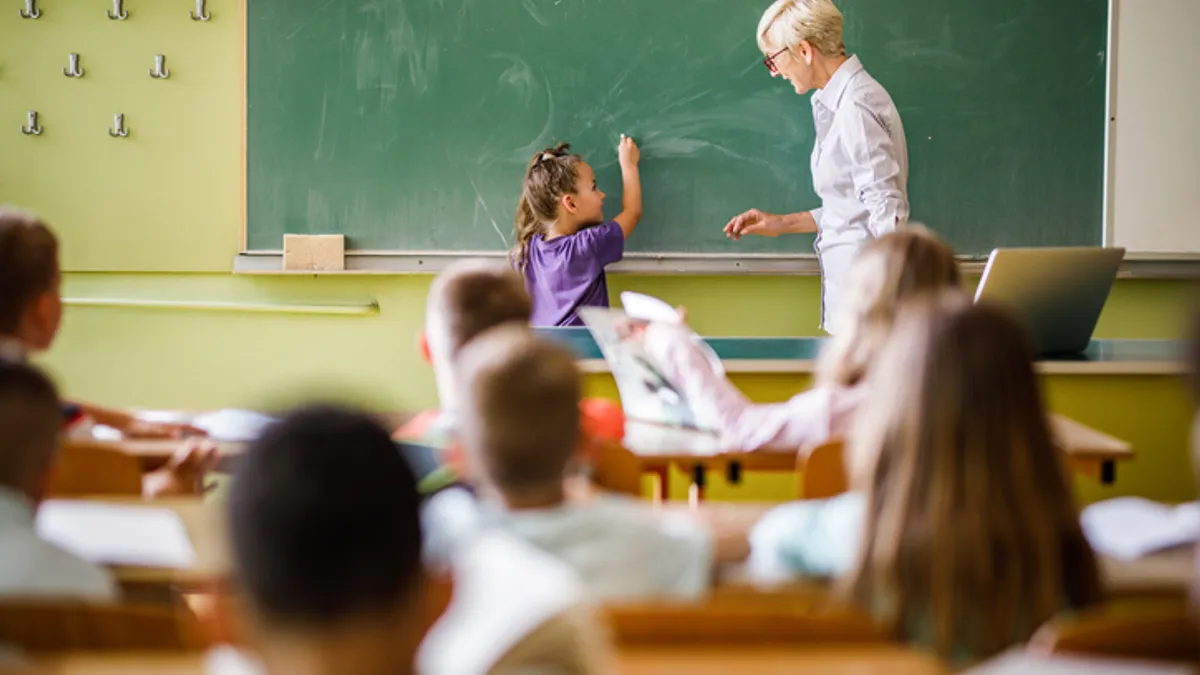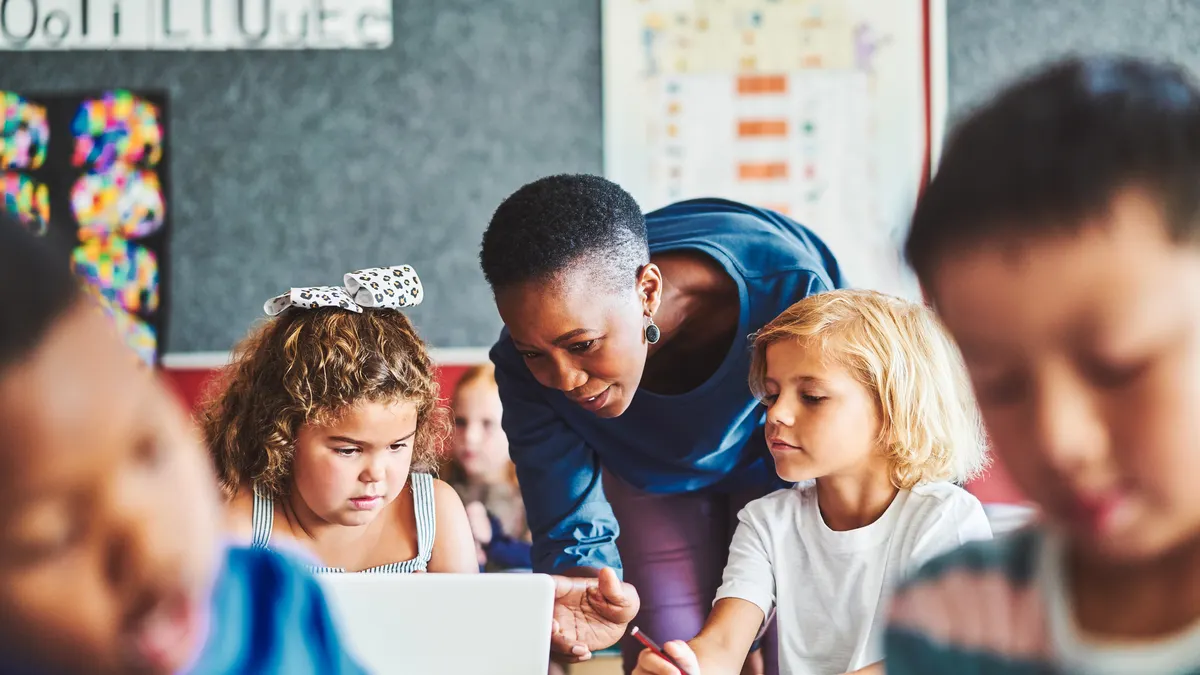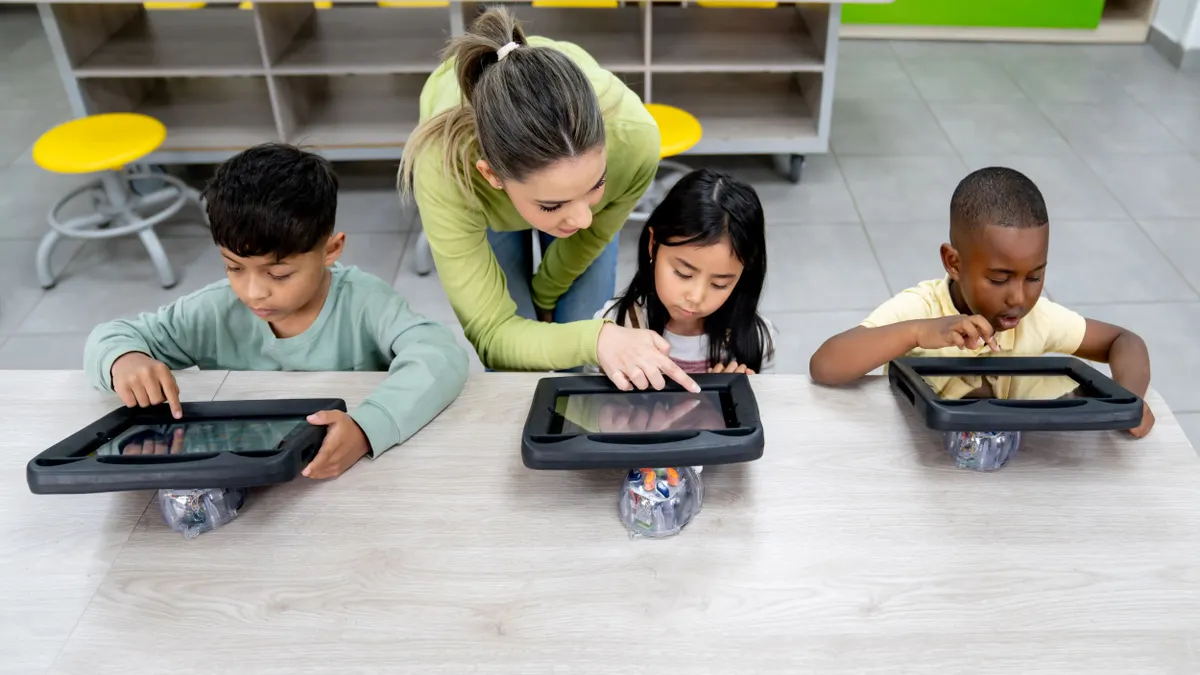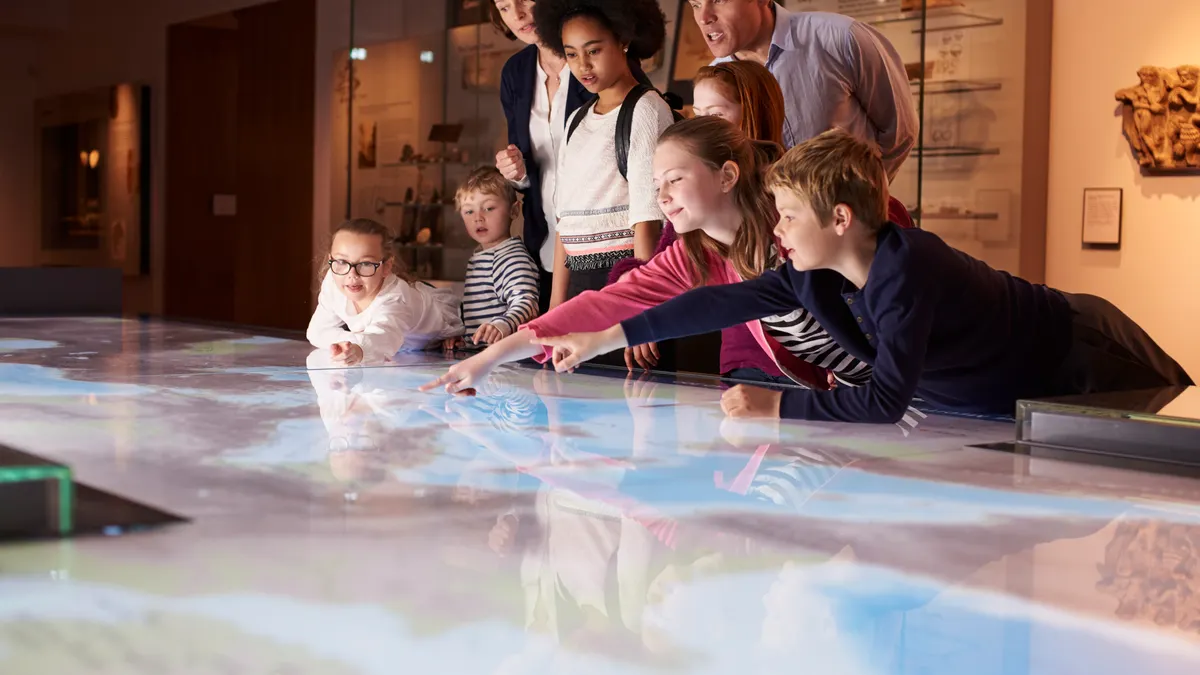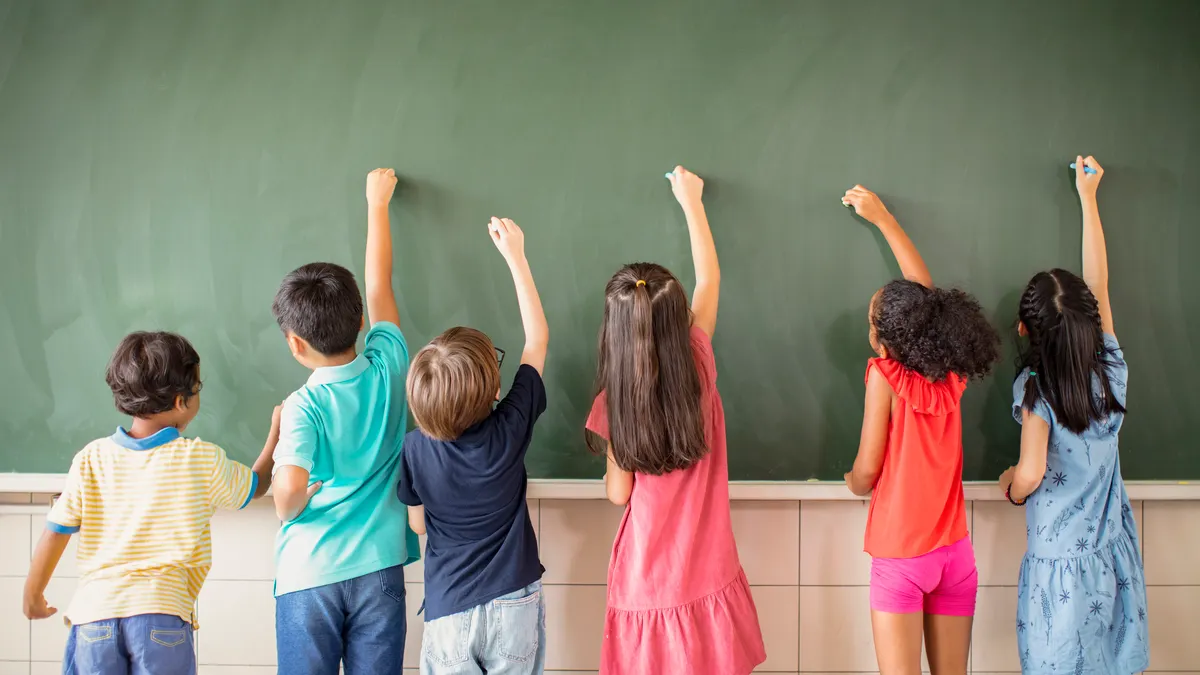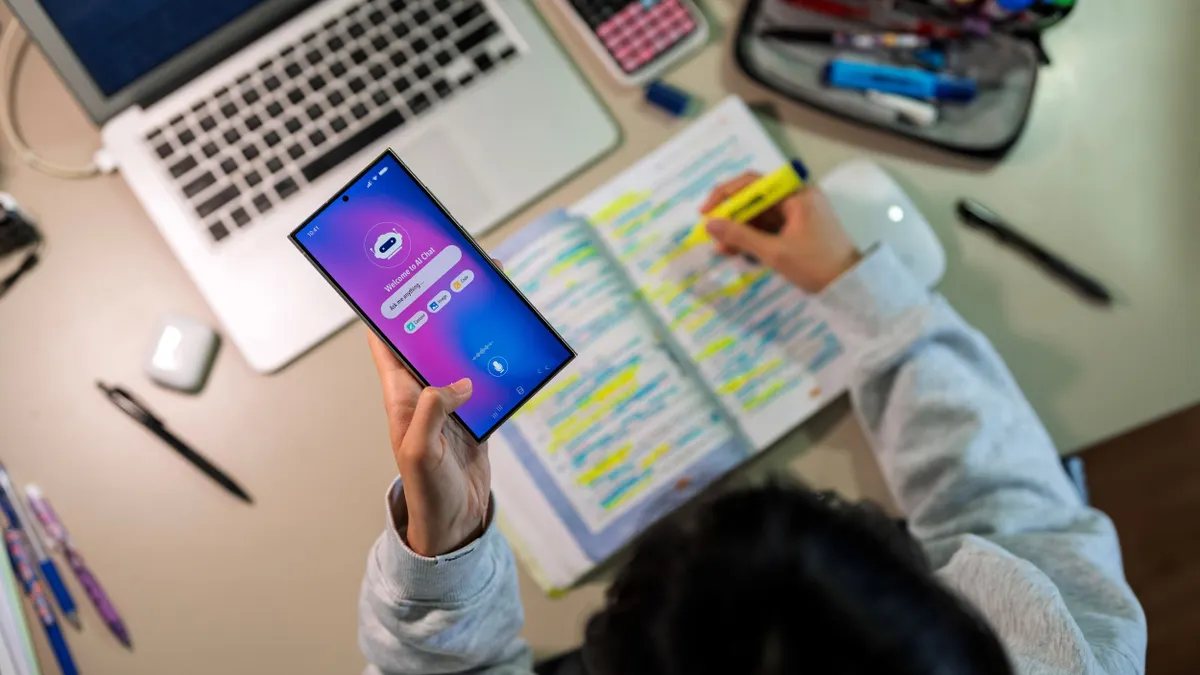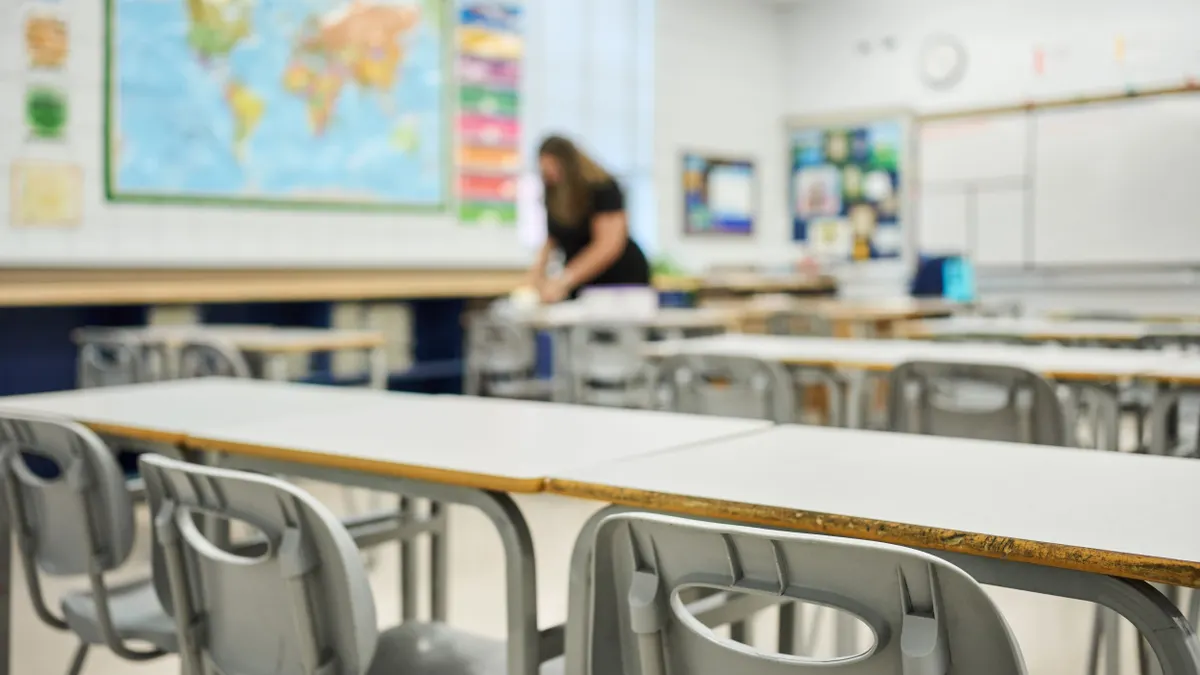See the latest Pre-to-3 column on drama's link to literacy in the early years.
They were in the room where it happened. The room in this case was the San Diego Civic Theater, and it, of course, was the phenomenally successful musical “Hamilton.”
As part of the Hamilton Education Program, more than 2,800 students from San Diego-area Title I high schools gathered at the theater Thursday — which just happened to be Alexander Hamilton’s birthday — not only to see the touring show, but also to perform their own songs, raps, monologues, poems and scenes developed during a lesson focused on the founding father and the birth of the U.S.
“No man's subject to the tyranny," sang University City High School students Jasmine Cruz, Jamielyn Cruz and Chelsea Lugue in their "Phillis Wheatley" song. Others performed raps, poems and even played instruments under the stage lights.
Emily Close, Cassidy Davis and Gia Capristo of Health Sciences High and Middle College delivered a "Women of the Revolution" spoken word. "You hear about the men," Close said after the "Hamilton" cast members answered some of their questions. "You hear about Abigail Adams. You hear about Martha Washington, but do you really know what they did?"
A project of the Gilder Lehrman Institute of American History, the Hamilton Education Program — which connects the Broadway smash hit to history classrooms across the country — was developed in collaboration with the show’s producer Jeffrey Seller, its creator Lin-Manuel Miranda and the New York City Department of Education.
With a $1.46 million grant, The Rockefeller Foundation funded the initial program in New York, where roughly 20,000 students participated during the 2016-17 school year. Then the show went on tour and the foundation provided another $6 million to allow the program to reach students across the country. In Chicago, where there have been 10 student-focused shows so far, a full-time staff member is managing the education program. San Diego is the latest stop for the program, which has also hit Los Angeles and San Francisco and aims to reach a quarter of a million students over a five-year period.
‘Amazing appeal’
To Tim Bailey, the director of education at the institute, “Hamilton” is the greatest thing to happen to teaching history since, well — history.
“It’s generational,” he says. “It has this amazing appeal across the spectrum.”
The institute was tapped to develop the program after Seller and Ron Chernow, the author of the book that inspired the show — saw a lesson plan Bailey developed on the Vietnam War that combined patriotic songs of the time with poems written by soldiers in the war.
In just a few months, Bailey developed the Hamilton curriculum, which includes web resources created from the institute’s resources as well as student and teacher guides. He says he had three goals for the program: to make students enthusiastic about history, to teach them about the founding era, and to give them skills that translate beyond just this period in history, such as learning how to analyze documents.
“One of the things I wanted students to recognize was the tension between historical accuracy and historical integrity,” he says, giving the example of a scene from the show in which Hamilton, Frenchman Marquis de Lafayette, tailor Hercules Mulligan and abolitionist John Laurens are socializing in a bar. While that might not have really happened, the scene still conveys the relationship between the men, Bailey says.
Students participating in the program have had to work through those same issues as they examine primary source documents and determine how to best communicate the history in their own pieces.
“It’s designed to be taught in a history classroom,” Bailey says about the unit, “but it is meant to be integrated with all of the different arts and humanities.” Students work with drama, music, choral and English language arts teachers to prepare their performances. Schools submit videos to the institute, which chooses about a dozen from the participating schools to present on stage before the show.
Bailey, who in addition to teaching history has an acting and theater background, says he’s been impressed with how students “internalize these people from 250 years ago.”
Taunya Robinson, who teaches Advanced Placement and Honors American history at Patrick Henry High School, described herself as a "Hamilton nerd," and said even before learning about the opportunity to participate in #EduHAM in San Diego, she had been showing Miranda's 2009 White House performance to her students. "It was special to let them find their niche," she says. Her students performed their "Connecticut Compromise Rap."
Daisy Martin, the director of History/Social Studies Learning at the Stanford Center for Assessment, Learning and Equity, says she hasn’t seen “Hamilton,” but values Gilder Lehrman’s materials and resources in general.
“I love the idea that students get to see the show and I do think it could awaken some students' interest in the past, the period, and the people — maybe even interest in how the government works,” she says, adding that she finds “equally important the opportunity for students to experience the performing arts — and think about the writing and creation of such a performance. It seems to me it opens doors into worlds that many students don't routinely encounter or know exist.”
Larry Ferlazzo, an English and social studies at Luther Burbank High School in Sacramento, CA, says he has found the program's materials to be "not very accessible" for the English learners he teaches. But that hasn't stopped him from designing lessons related to the show. He gave his students a writing prompt using "Wrote My Way Out," a line from the song "Hurricane" in the musical. Another prompt reads: "The songwriter has Alexander Hamilton saying these words. What do you think he means by 'I’m not throwing away my shot'? Can you think of others you know or who you have read about who have also not thrown away their 'shots'? Who are they and what did they do? How can you apply this idea to your own life?"
‘Guides, not interpreters’
The institute’s work to support history teaching and teachers goes well beyond the Hamilton Education Program. It sponsors the annual National History Teacher of the Year award, operates a network of about 16,000 schools who receive access to primary sources and classroom materials, and offers free professional development seminars for teachers during the summer.
“Teachers should serve as guides, not interpreters of American history,” Bailey says. “We are giving teachers access to these original documents and teaching them how to use them.”
Artifacts in the institute’s collection of 65,000 primary source documents stretch as far back as Christopher Columbus’ letter to Ferdinand and Isabella about his voyage. Other time periods featured on the website include national expansion, the Civil War and Reconstruction, the Industrial Revolution and the Great Depression. And more recently, Bailey says, the demand has increased for documents on the latter half of the 20th century.
Now he just needs someone to write another musical.







 Dive Awards
Dive Awards
